What is neck pain?
The neck is the most complex area of your body, moving over 600 times an hour. No other part of the body is in such a continuous state of movement. We move our head to orientate ourselves in response to sensory stimuli. Therefore, your neck is at the command of your eyes, ears, mouth and nose. All of this movement is carried out by 26 neck muscles, some of which are attached to your skull, which is balanced on a single bone called the atlas.
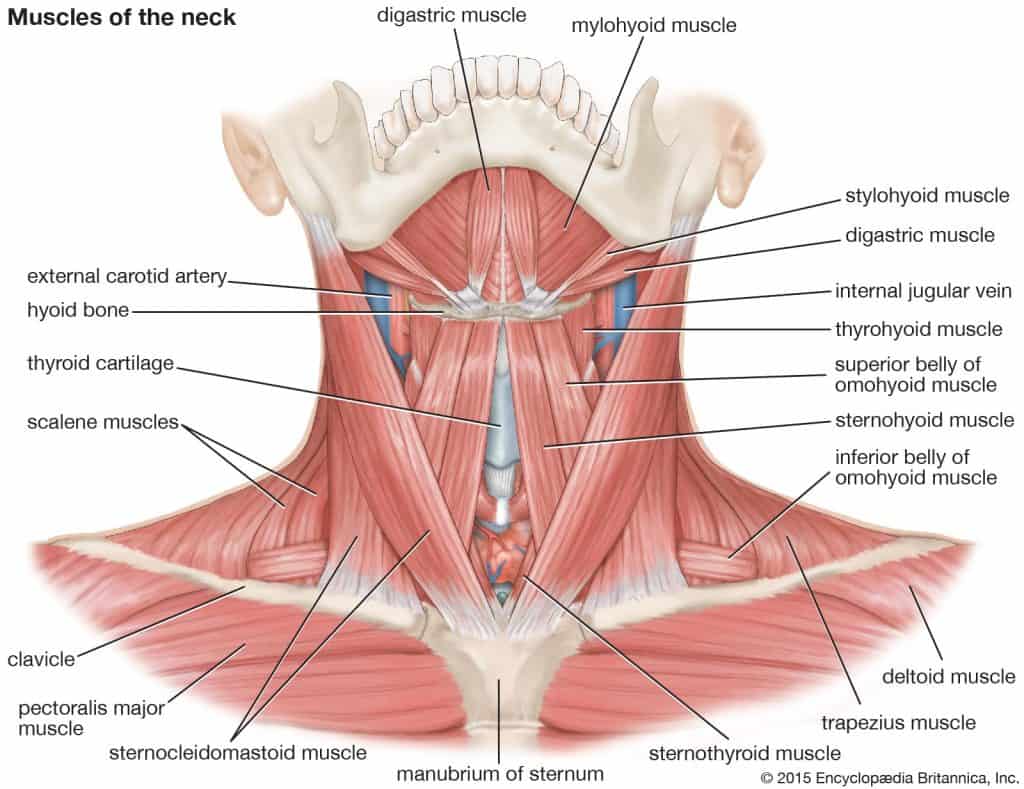
Perhaps due to your head being in a constant state of motion, most individuals with neck pain do not experience full recovery, often complaining of long-lasting symptoms. In fact, whiplash injury triples the risk of future neck pain.1
Why do I have neck pain?
There are many causes of neck pain, such as facet joint irritation from a whiplash injury. The more important question to answer is what are the consequences of a neck injury. There are four major changes that occur when you experience neck pain:
- Pain and sensitivity (of course!) and the anxiety/fear around that
- Muscle fatty infiltration
- Delays of neck muscle firing, overactivity of superficial muscles, and under activity of deep muscles, and reduced speed of movement
- Altered proprioception, postural stability and eye control
What other changes occur in neck pain?
There are specific changes that occur to the sensorimotor system of the neck, affecting balance, eye control and head/neck awareness. Symptoms include dizziness, unsteadiness, and light-headedness. This is a common complaint in people with neck pain - over ⅓ of people with neck pain and ¾ of those with neck trauma experience sensorimotor impairments.2,3
There are also vision related symptoms that present in roughly 50% of people with neck pain - difficulty concentrating, visual fatigue and sensitivity to light. It is important to remember that although visual symptoms are common, there are certain visual issues that are not related to neck pain, such as double vision.4
As an aside, dizziness is a broad symptom that can be caused by many conditions. If you are experiencing dizziness, it is important to see a healthcare professional to get a proper diagnosis.
Why do I experience these sensorimotor changes with neck pain?
There are two main reflexes in the head and neck: vestibulo-ocular reflex (VOR) and cervico-ocular reflex (COR). The VOR relates to the vestibular organs located in the inner ear. The COR relates to the muscle spindle reflexes in the neck, which detect when the muscles in the neck are stretched, such as during head movements. When the neck is moved, both reflexes are activated and send signals to the brain to control the eye muscles. This allows us to keep a steady gaze on an object as we move our heads from side to side. The interplay between these two reflexes helps coordinate the movement between our head and our eyes.
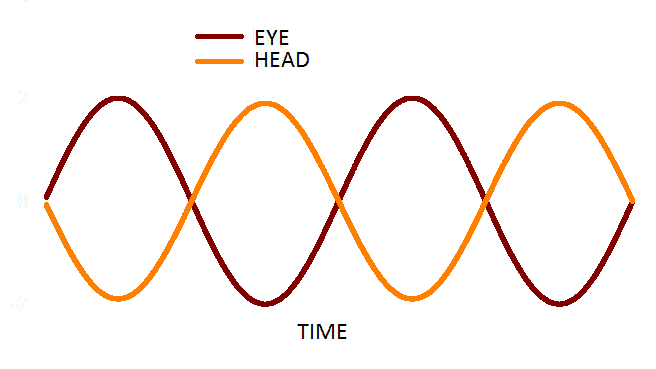
When experiencing neck pain, the signals from the muscle spindles that are involved in the COR are affected. The brain gets differing signals from the COR and the VOR, causing sensorimotor disturbances.
How is sensorimotor control tested?
Proprioception is usually measured by comparing one side to the other side. Unfortunately, this method does not work in the neck. Instead, we can test it using a laser and target. This is called joint position sense, and a higher error is associated with neck pain.5
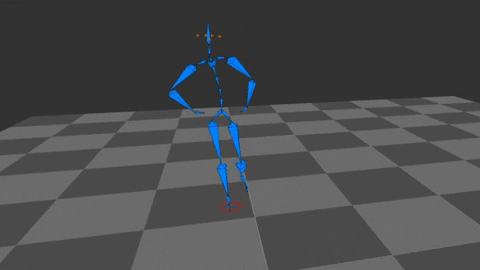
Postural control is assessed by looking at your balance. Studies show that neck pain can alter your balance. At Kinetic Labs, we objectively measure how much your body sways during balance tasks.

How effective is sensorimotor training?
Targeted sensorimotor exercises are effective in reducing pain and improving function if impairments are present.6
Surprisingly, balance training has also been shown to reduce pain levels in people with neck pain. This is possibly due to improved sensorimotor integration between the body and the reflexes that control the head and neck.7
Why is it important to strengthen your neck after injury?
Within weeks of sustaining a neck injury, deep neck muscles begin to weaken and areas of fatty infiltrate are visible on MRI. These changes are present even after symptoms are gone and when recovery is typically considered complete.8
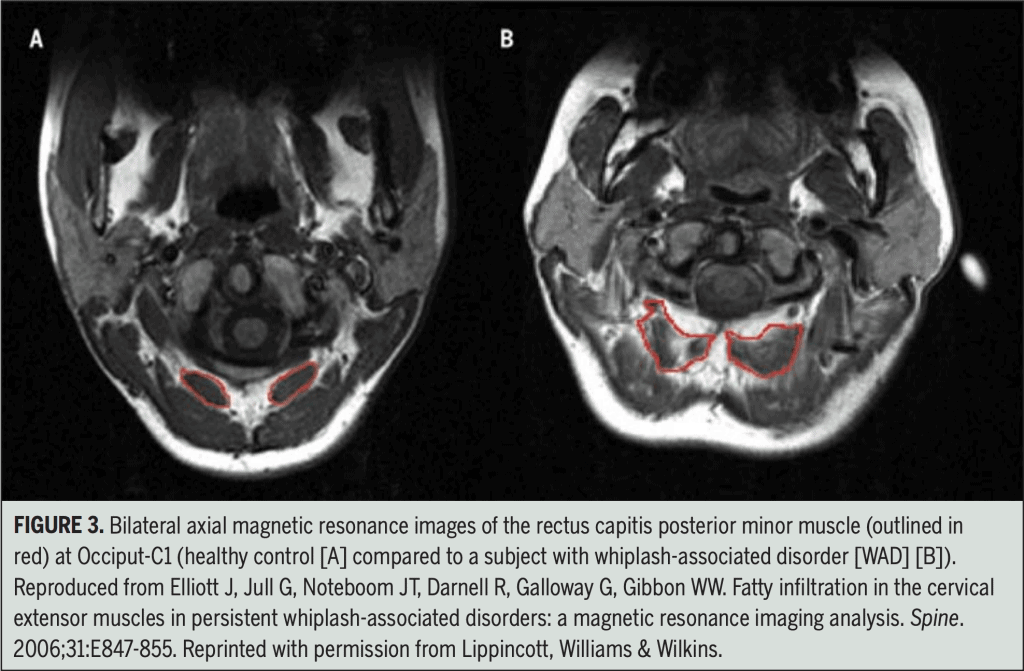
There are also delays in neck muscle activation during tasks such as lifting your arm or reaching for an object. Head movement speed is reduced and deep neck muscle firing becomes slower as well. In addition, the superficial muscles tend to be recruited more if you are experiencing neck pain. The chart below shows the differences in peak force (in Newtons) between neck pain patients versus healthy controls. In general, individuals with neck pain have ⅔ of the neck strength of their healthy counterparts.
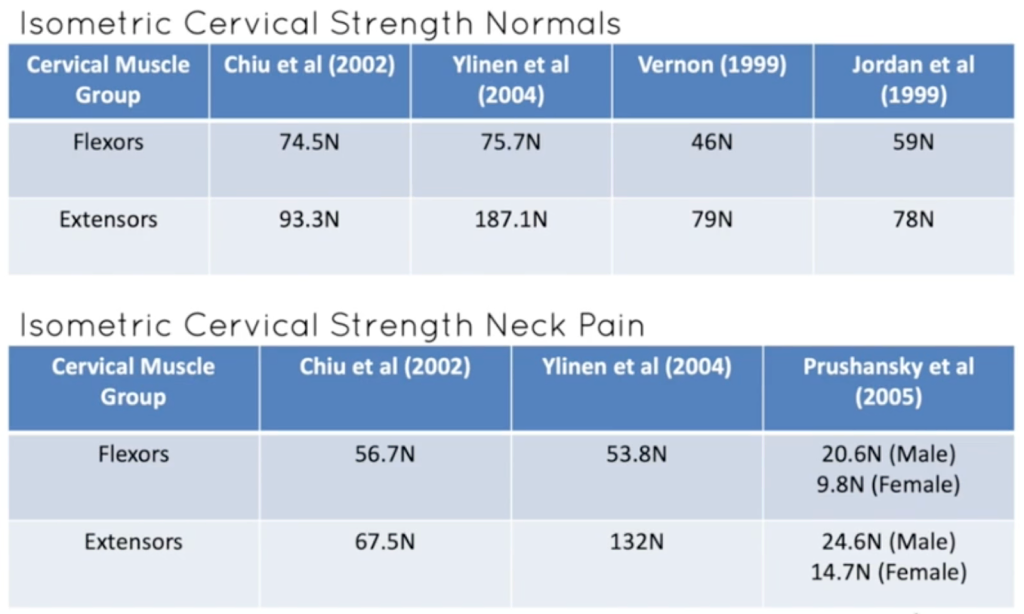
At Kinetic Labs, we use a force dynamometer to precisely measure the muscle strength of your neck. This allows us to track your progress over time and compare your results to similar individuals without neck pain.
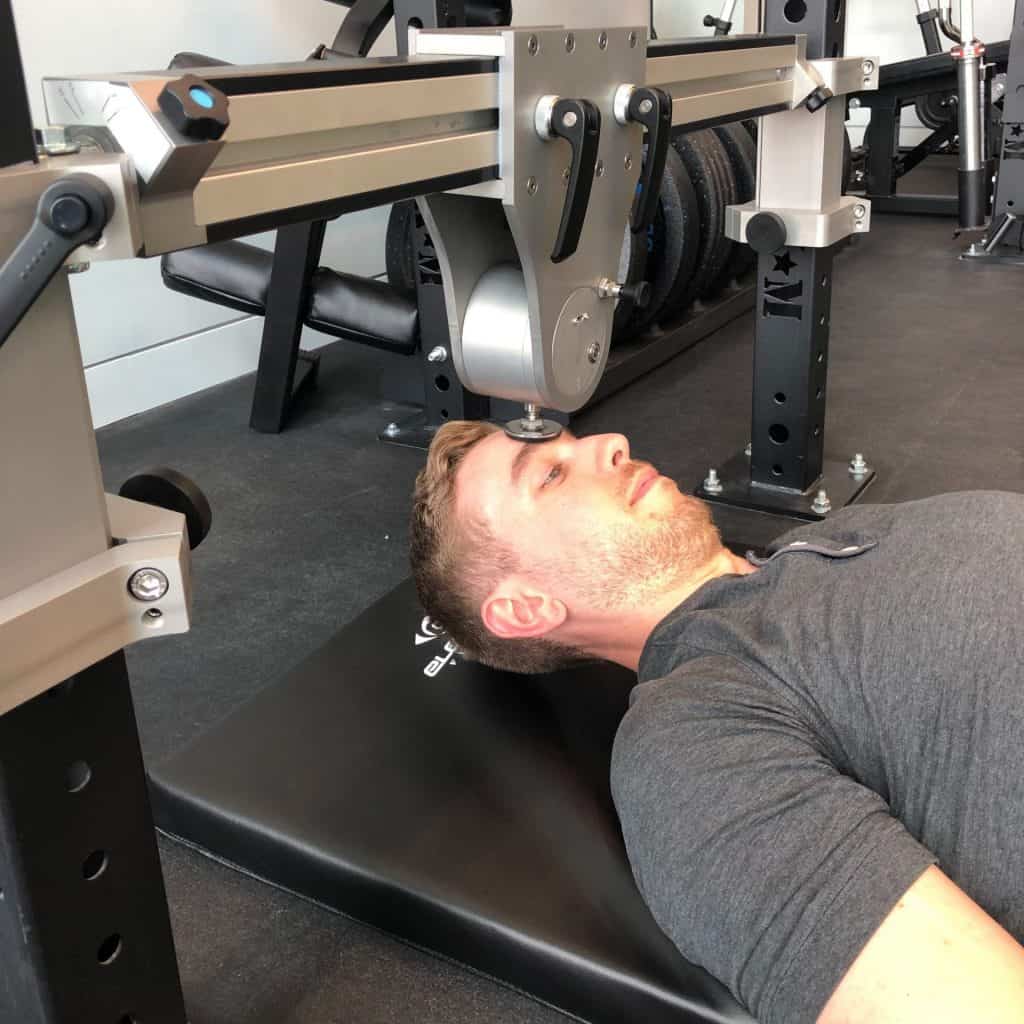
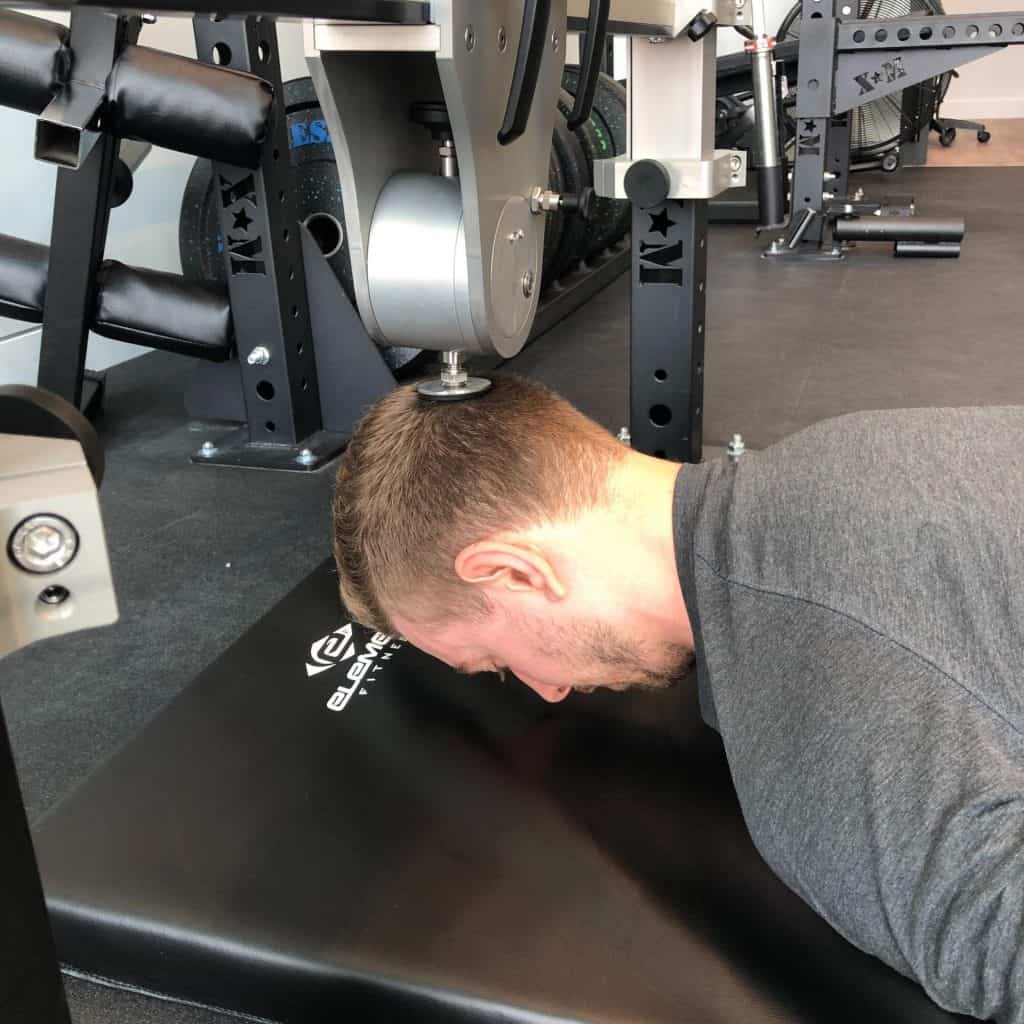
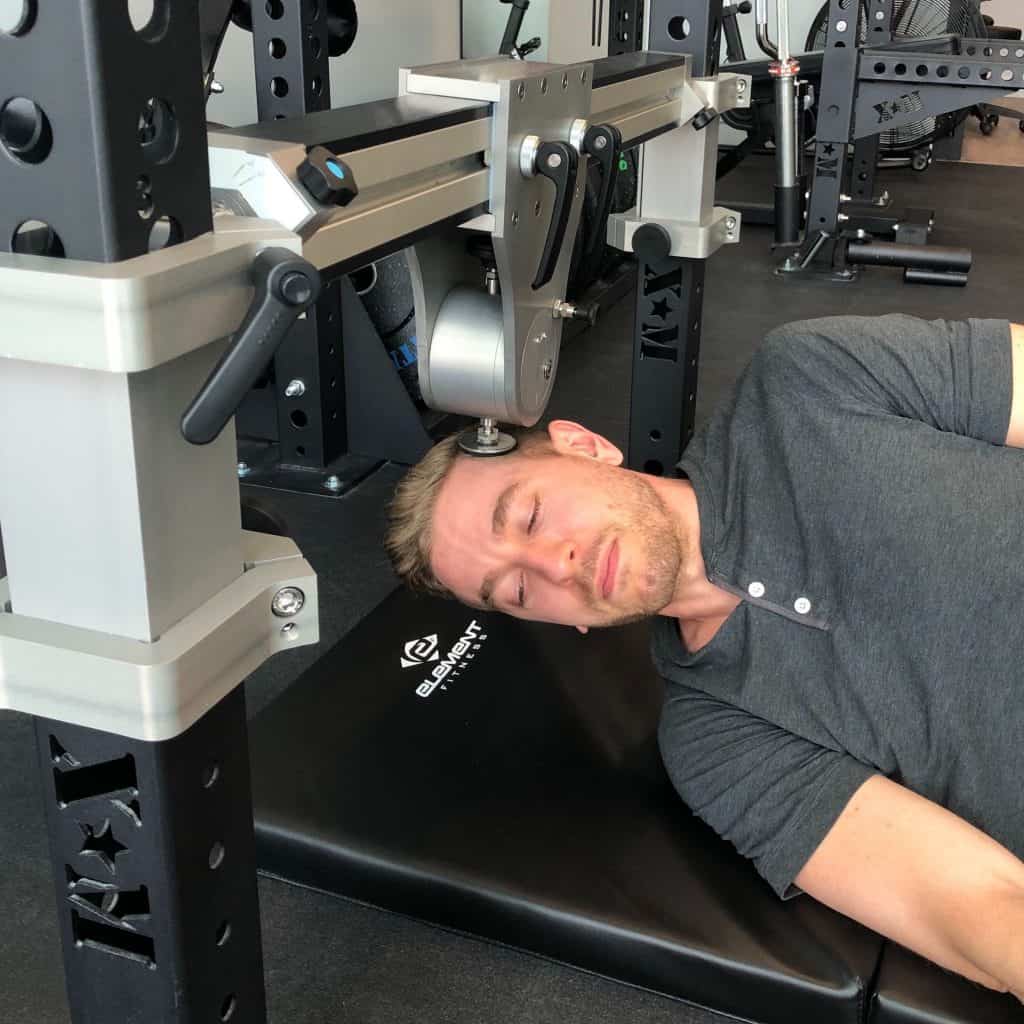
Exercise is crucial in order to reverse these changes and restore normal muscle function. One study showed that pain and disability improved by 70% with strengthening compared to only 28% in the control group.9
Why does my neck feel stiff?
Neck stiffness is common after an injury.10 This stiffness is your body’s natural response to injury. Your brain subconsciously protects the injured or painful area by restricting movement. A research study looking at neck extensor muscle activity during single-leg balance provides evidence of this phenomenon. Healthy participants contracted their neck muscles at 10% of their max force during this task, while those with neck pain contracted their neck musculature at up to 50% of their peak force. This translates to a very rigid and sore neck.
What is the best treatment for the neck?
The neck is one of the areas that the functional exercise phenomenon seems to have skipped. If you think of the rehab for an ankle sprain or knee injury, it’s apparent how well the exercises mimic the demands of the task - such as unstable surface training or jumping movements. Exercises targeting the neck are traditionally more simple - and frankly boring. At Kinetic Labs, we use a functional-based approach to treating neck pain.
In addition to hands-on techniques to reduce pain and restore mobility, we target the three major pillars of neck rehabilitation - proprioception/postural control, muscle strength and sensorimotor impairment. Targeting these pillars results in improved outcomes and faster recovery time.
References
- https://bit.ly/39yWgyV
- https://bit.ly/2D9VIn9
- https://bit.ly/331vtdb
- https://bit.ly/3jOERXO
- https://bit.ly/306prGs
- https://bit.ly/30WZdVU
- https://bit.ly/304lZfq
- https://bit.ly/3hM8iYO
- https://bit.ly/2BG2KQ6
- https://bit.ly/2X1f6K8


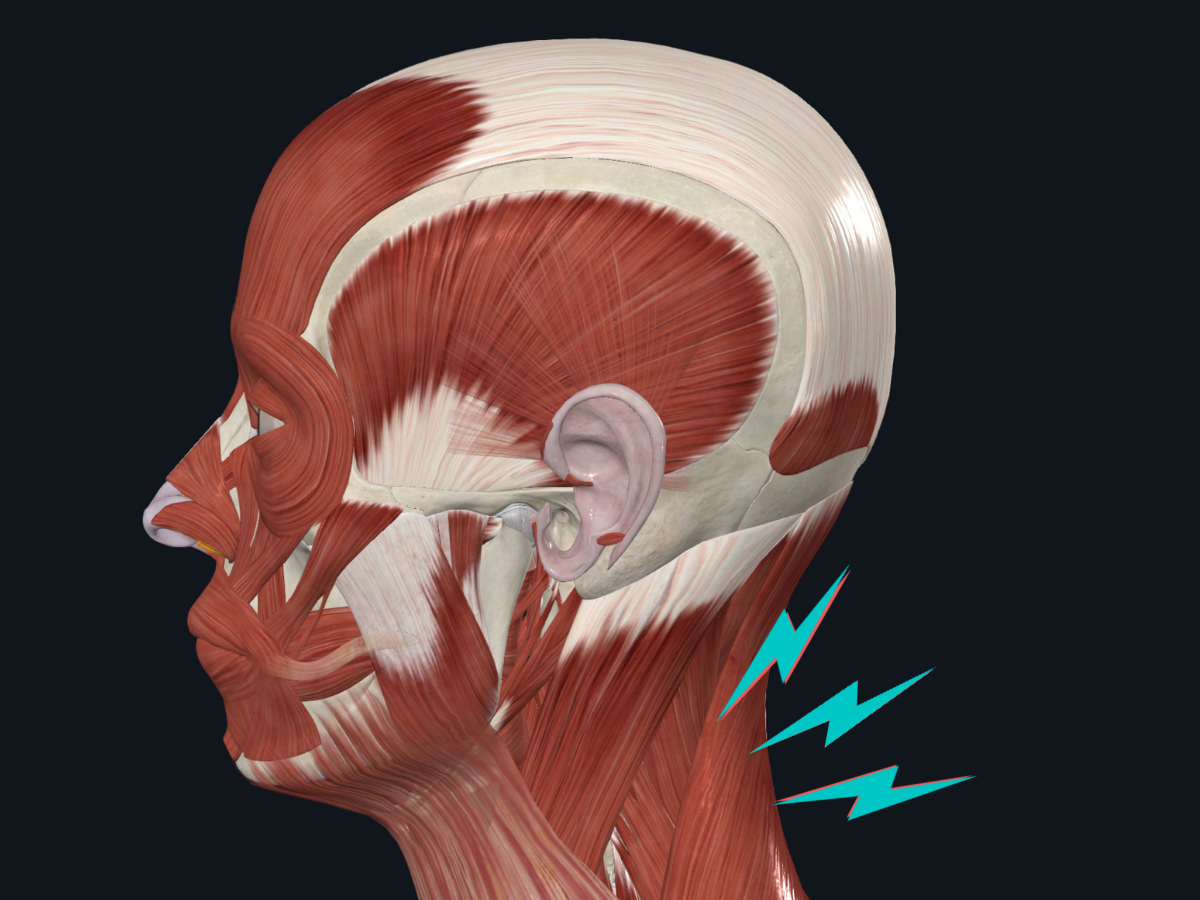
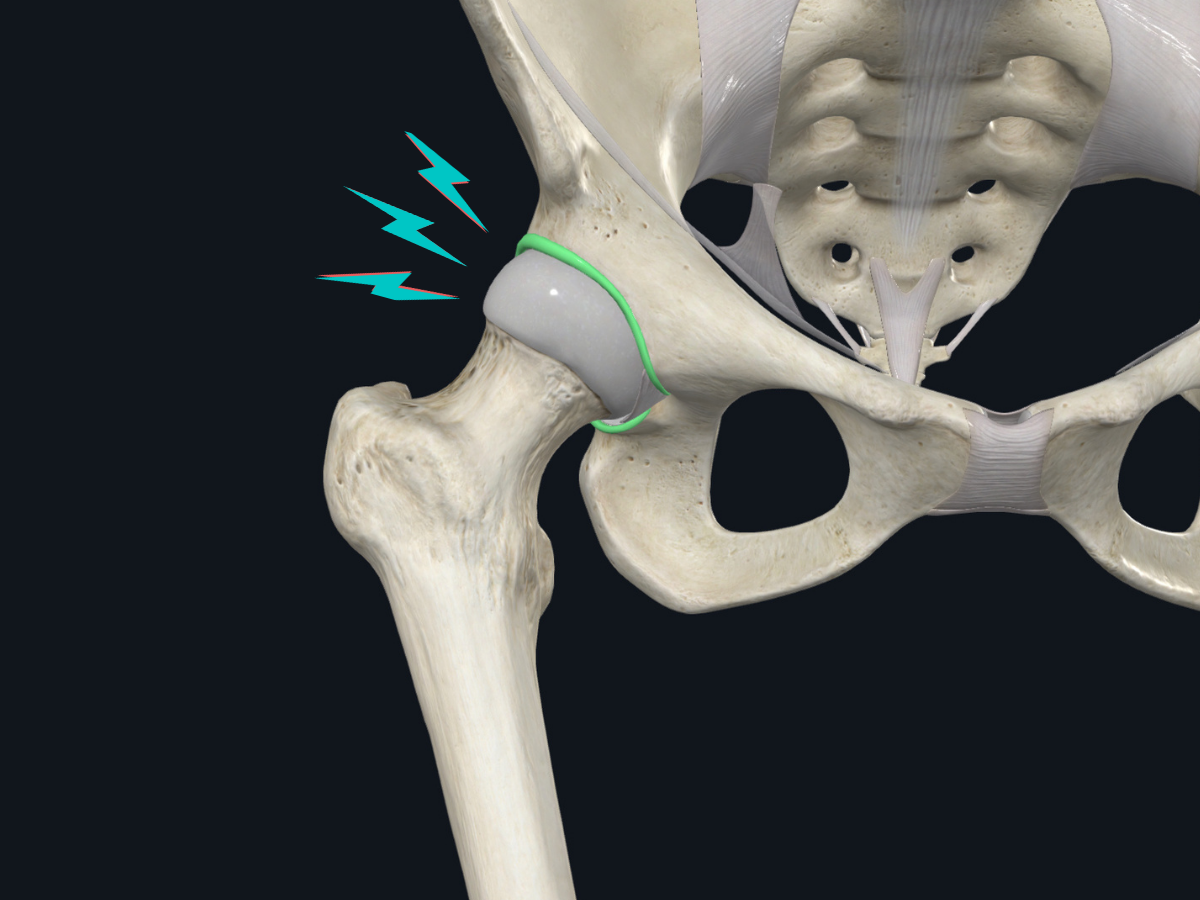
.png)
